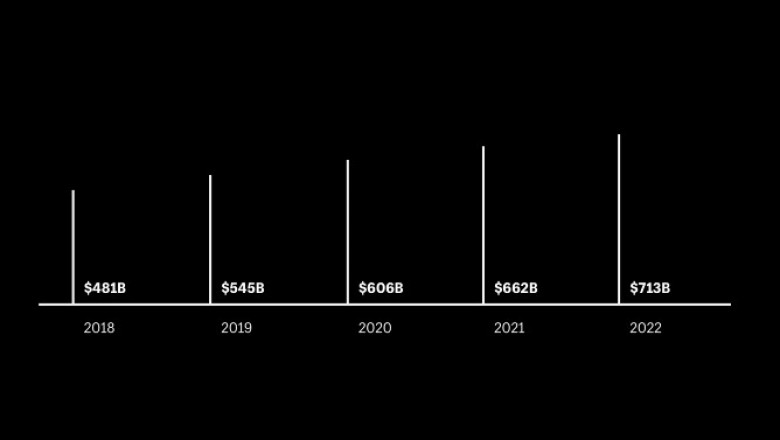views

With an increasing concern towards issues like global warming and extinguishing of resources due to human influence, there is a rising interest in natural resources. This scenario has driven a route towards systems like sustainable development. Sustainable fashion is one such approach that people have become familiar with in recent time, and this can be seen variably in the fashion industry as well.
Sustainability in fashion
More and more designers and brands are moving towards producing fashion lines and pieces that are sustainable in nature. This involves minimum wastage of resources, reduction in the carbon foot printing, fair trading, energy conservation, and shifting to natural modes of energy production. One of the most common examples of sustainability in fashion would be the exchange of harmful chemically made fabrics with easily biodegradable natural fabrics in clothes.
Key objectives of sustainable fashion
One of the objectives that are seen to be achieved through sustainable fashion is that the enterprises are able to provide sociological and ecological benefits to society while having an economic advantage from the business. Sustainable fashion also denotes considering fashion needs through perspectives of all stakeholders, whether present or future. It focuses on addressing the industry as a whole instead of aiming separately at retailers to ensure maximum benefit to all the stakeholders involved.
Sustainable fashion in the global retail industry
Some of the foremost companies who openly addressed environmental concerns towards sustainable fashion were big names such as ESPIRIT and Patagonia in the late 1980s. The principles of ‘green’ or ‘eco’ fashion were introduced therein but it was not until the late 1990’s that they gained proper momentum amongst retailers in the fashion industry.
Consumer perception towards sustainability in India
Increasing awareness about the environmental concerns and an all in one comprising fashion module, followed by the industry in the past few years, has finally seen a positive attitude among consumers. This change is towards choosing sustainable fashion brands than their contemporaries even at a little higher cost which is gradually emerging in countries like India.
There is another common emerging trend known as ‘Green Consumerism’ that has seen light in the past few years. This comprises of aiming at a class of consumers that are concerned directly with the sustainable agendas of the fashion houses.
Competitive strategies aligning people and society
Fashion is understood as a wheel of constant change and development depending upon the tastes of people and the expectations of the society at a point of time. This scenario involves a continuous transformation of business models to be in line with current demands.
While, sustainability points towards resourcefulness and continuity, the apparent difference between the two models can be efficiently dealt with if fashion is given a broader perspective to function. And on the other end, the retailers can come up with strategies to align the two together. An innovative approach to achieve the same would be to increase the life span of fibers usage so that there is durability as well as ease in repair.
Tactics like “Right to repair”
Another such strategy would be to introduce services like Right to repair in the fashion industry. A comparatively new concept that promotes sustainability in fashion, through providing after sale service to the consumers which involve repairing or restyling a particular piece after some wear and tear.
Moving Forward
We have come a long way towards fashion, and it is the second most polluting industry. Thus, there is this need of new strategies of awareness to attract and create sensitivity amongst the consumers towards sustainable fashion. And this is intended to reduce the carbon footprint by adopting sustainable development, which is highly required in the present scenario.











Comments
0 comment